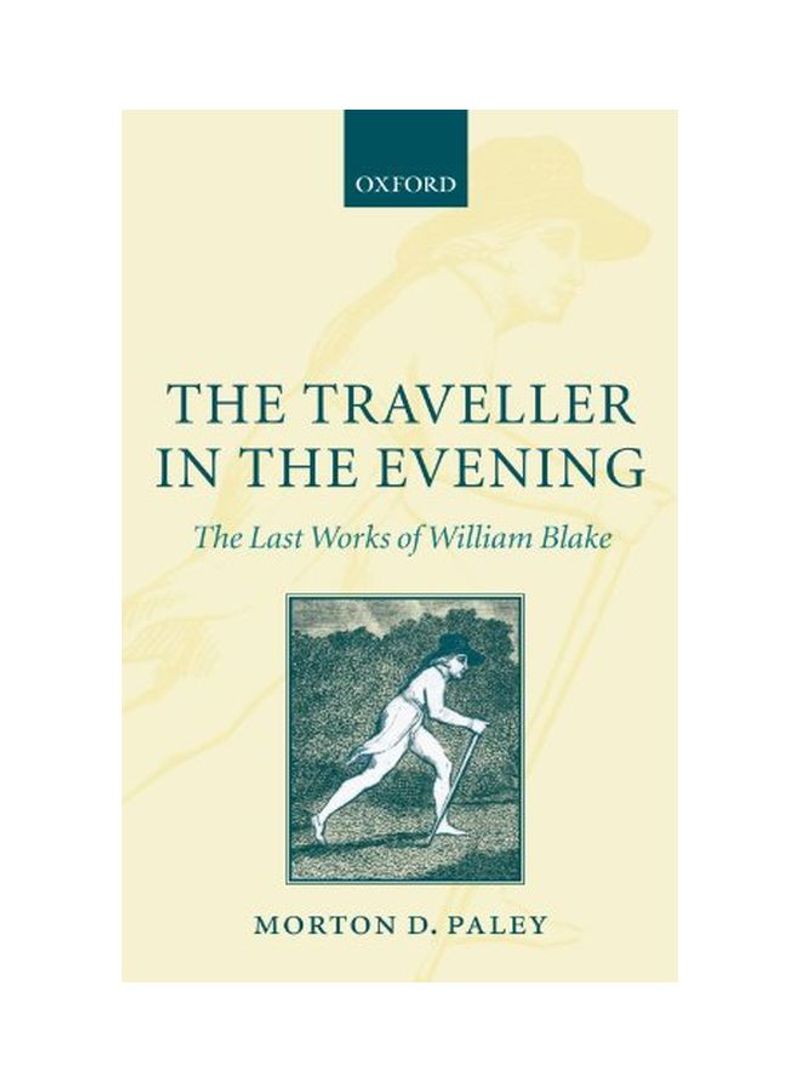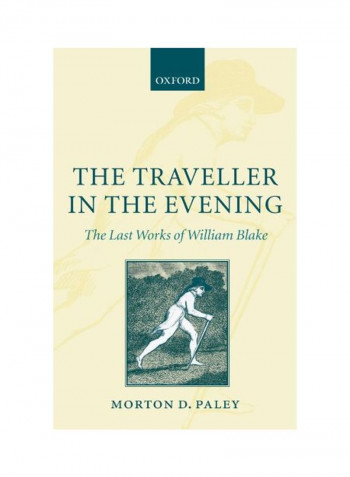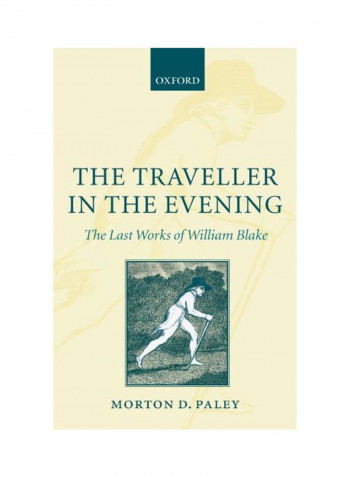The Traveller In The Evening: The Last Works Of William Blake Paperback
Recommend
Sort by
Rating
Date
Specifications
Author 1
Morton D. Paley
Book Description
There has never been a book about Blake's last period, from his meeting with John Linnell in 1818 to his death in 1827, although it includes some of his greatest works. In The Traveller in the Evening, Morton Paley argues that this late phase involves attitudes, themes, and ideas that are either distinctively new or different in emphasis from what preceded them. After an introduction on Blake and his milieu during this period, Paley begins with a chapter on Blake's illustrations to Thornton's edition of Virgil. Paley relates these to Blake's complex view of pastoral, before proceeding to a history of the project, its near-abortion, and its fulfillment as Blake's one of greatest accomplishments as an illustrator. In Yah and His Two Sons the presentation of the divine, except where it is associated with art, is ambiguous where it is not negative. Paley takes up this separate plate in the context of artists's representations of the Laocooen that would have been known to Blake, and also of what Blake would have known of its history from classical antiquity to his own time. Blake's Dante water colours and engravings are the most ambitious accomplishment of the last years of his life, and Paley shows that the problematic nature of some of these pictures, with Beatrice Addressing Dante from the Car as a main example, arises from Blake's own divided and sharply polarized attitude toward Dante's Comedy. The closing chapter, called 'Blake's Bible', is on the Bible-related designs and writings of Blake's last years. Paley discusses The Death of Abel (addressed to Lord Byron 'in the Wilderness') as a response to its literary forerunners, especially Gessner's Death of Abel and Byron's Cain. For the Job engravings Paley shows how the border designs and the marginal texts set up a dialogue with the main illustrations unlike anything in Blake's Job water colours on the same subjects. Also included here are Blake's last pictorial work on a Biblical subject, The Genesis manuscript, and Blake's last writing on a Biblical text, his vitriolic comments on Thornton's translations of the Lord's Prayer.
ISBN-13
9780199227617
Language
English
Publisher
Oxford University Press
Publication Date
06 Feb 2008
Number of Pages
348
About the Author
Morton D. Paley is Emeritus Professor in the Department of English at the University of California at Berkeley. A well-known and widely-published critic on Romanticism, he received the Distinguished Scholar Award, Keats-Shelley Association of America in 2002, and a festschrift on Romanticism and Millenarianism, ed. Tim Fulford, was published by Palgrave in 2002 in his honour. His publications include: Editor (with Meg Harris Williams), Linguistic Transformations in Romantic Aesthetics from Coleridge to Emily Dickinson. Lewiston, N.Y. Edward Mellen Press. 2002. Apocalypse and Millennium in English Romantic Poetry Oxford: The Clarendon Press, 1999. Portraits of Coleridge Oxford: The Clarendon Press, 1999. Coleridge's Later Poetry Oxford: The Clarendon Press. 1996. 2nd ed., 1999. Editor, The Last Man by Mary Shelley. With an introduction and notes. Oxford. Oxford University Press. 1994. Editor (with T. J. Fulford), Coleridge's Visionary Languages Cambridge and New York. Boydell and Brewer. 1993. Jerusalem by William Blake. A newly edited text, with an introduction, commentaries on the poetry and the designs, and 105 reproductions. London: The Tate Gallery for The William Blake Trust, 1991. The Apocalyptic Sublime London and New Haven. Yale University Press. 1986. The Continuing City: William Blake's Jerusalem Oxford. The Clarendon Press. 1983. William Blake Oxford. Phaidon. 1978. German translation by P. - M. Hottenroth. Stuttgart. W. Kohlhammer. 1978. New printing: Ware, Hens. Omega Books. 1983. (With Robert N. Essick), Robert Blair's The Grave Illustrated by William Blake London. Scolar Press. 1982. Editor (with Michael Phillips), William Blake: Essays in Honour of Sir Geoffrey Keynes Oxford. The Clarendon Press. 1973. Energy and the Imagination: A Study of the Development of Blake's Thought Oxford. The Clarendon Press. 1970. Editor, Twentieth Century Interpretations of Songs of Innocence and of Experience Englewood Cliffs, N. J. Prentice-Hall. 1969.
Editorial Review
Very few scholars other than Morton D. Paley would be capable of executing a project as complex as this, that is, one requiring simultaneously an intimate familiarity with both the literary and artistic traditions as they culminated in Jerusalem, and the intellectual facility to prevent the composite books from impinging upon an analysis devoted to the last works. Paley is able to view each of these texts individually in its own right and all collectively in order to illuminate the dimensions of Blake's creativity in his last decade. * Sheila A. Spector, The Wordsworth Circle * It is gratifying to encounter such solid and pioneering scholarly detail in so readable a form, helped not least by Paley's admirable clarity and quirky humour. . . . an oustanding contribution to our understanding of these neglected later works, providing authoritative scholarship of importance for anyone working on the period. * Angus Whitehead, The Cambridge Quarterly * The Traveller in the Evening extends Morton Paley's distinguished career of scholarship on Blake's art and thought . . . displays an encyclopedic knowledge of Blake's art and life as well as an immense erudition about the art world of the time, various strands of apocalytic religious thought, and the social and cultural milieu of London. * Stephen L. Carr, Studies in Romanticism * Review from previous edition superbly lucid and learned account of Blake's late works * Seamus Perry, Times Literary Supplement *



